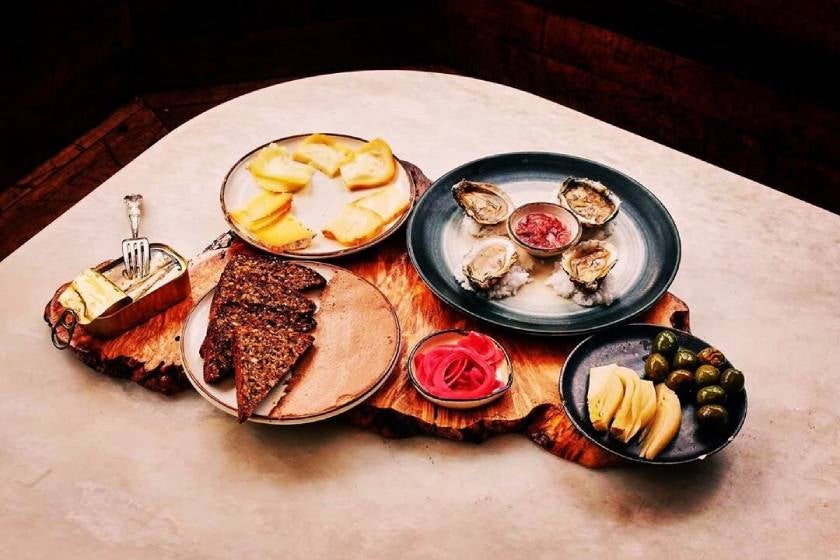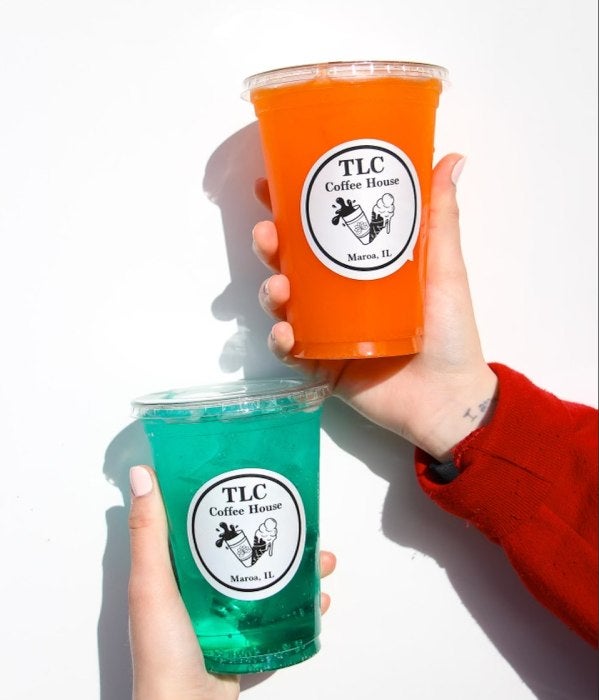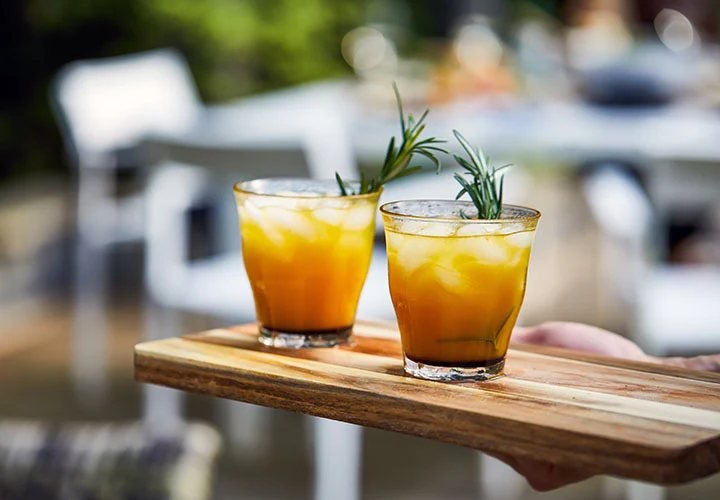Just like fashion, food trends come and go, times change quickly, and staying current will keep your restaurant fresh. In 2025 sustainable, healthy, plant-based, local foods are predicted to take the stage along with a punch of spices, and international flavors. Here we’ll keep you up to date on all the latest flavors and beverages, and how adding trendy new dishes and drinks to your menu could potentially skyrocket your business on social media lifting your profits and filling your seats.
Key Takeaways:
- Look for alternatives: Wheat alternatives and non-alcoholic cocktails are having a moment.
- Can it: High-end canned fish and seafood appeal to trends for Nordic minimalism and zero-waste dishes.
- Make it fit: Not every food trend will be a fit for every menu. Consider your brand and customer base before embracing trends.
1. Gluten-free Flours and Wheat Alternatives
Wheat prices are expected to remain high through 2025. The ongoing war in Ukraine has tied up the grain crops from two major wheat-supplying countries; Russia and Ukraine. The US is one of the top 5 global wheat producers, so US restaurant owners don’t need to be concerned about wheat shortages, but businesses like bakeries and pizzerias that rely on wheat as a low-cost staple ingredient could see their operating costs rise dramatically.
Operators could experiment with replacing some of their wheat flour with lower-cost non-wheat alternatives (oat flour, for example, can replace up to 20% of wheat flour in most recipes, be made in-house, and is healthy and filling). Or if you offer complimentary bread baskets, consider charging for the bread or for bread basket refills.
Flour alternatives are gaining popularity for a few reasons, they are gluten-free, they have an unlimited amount of flavor combinations with all the variables and types, and many of them come with the added benefit of protein boosts. One cup of chickpea flour packs in 20g of protein.
2. Preserved Seafood
Scandinavian simplicity and minimalist living have been on trend for several years in the decorating space, and they are now beginning to catch on for healthy, frugal living as well. Canned, smoked, and jarred fish like mackerel, squid, and octopus preserved in sauces and spices are ready to put on a smorgasbord with crackers, jelly, dried berries, herbs, and crusty bread. These items are generally low-cost and can be sold as a high-end, international appetizer.

Jarred and canned seafood is also enjoying a moment as a cornerstone menu item for “zero-waste” restaurants. The fish have a long shelf life, don’t need refrigeration, and can be served directly from their own recyclable vessel. Brooklyn-based restaurant Rhodora Wine Bar frequently features pickles, preserves, and canned seafood on their menu.
3. Plant-based Aquatic Foods
The prolific, vitamin-rich content found in seaweed, sea moss, duckweed (also called water lentils), and agar-agar (a red algae often used as a vegetarian gelatin substitute) will be showing up even more in modern snacks and menu items.
Duckweed comes from Southeast Asia but is a new idea for the American Palate. It grows incredibly quickly and depending on growing conditions can contain anywhere from 33% to 51% protein. Toss it into smoothies, salads or stir fries. Seaweed can be made into warm or cold seaweed salads or wrapped over rice triangles called onigiri in Japan, usually filled with roe, salmon, tuna, or pickled plums. Sea moss can be made into a gell and added to beverages or smoothies for an iodine and immune system boost.

(Source: Gabriel Kreuther)
4. ‘Swicy’ Snacks
Gen Z is changing things up by becoming the biggest snacking generation. They don’t limit snacks to home and are more likely to buy them at restaurants. This year, bold, spicy, and international flavor combinations are trending. According to a study by NCSolutions, more than half of Gen Z’ers (51%) consider themselves “hot sauce connoisseurs.” A full 35% of Gen Z’ers responded that they had even signed a waiver before eating a spicy dish.
A spicy sweet combination dubbed “swicy”, including spicy honey is one of the latest trends as well. This idea can be used with bar snacks, appetizers, or desserts as in cardamom spiced mixed nuts, chili mango sorbet, or sriracha popcorn.
5. Dumplings
The versatility of dumplings is bringing them to tables this year; they’ve been cited on the Whole Foods list of trendy foods making an appearance in almost every aisle this coming year. Dumplings appear in just about every country in the world in some form or another and their ability to adapt to every diet and palate makes them exciting for a resourceful chef. Google Trends shows they’ve been a steady trend over the last 5 years in every single state.

6. Low and No Alcohol Beverages
Sobriety is trending on Tik Tok, users are calling it sober curious where people are challenging themselves and their friends to drink less while socializing. This is leading to a surge in non-alcoholic drink options, something to hold onto while abstaining from alcohol out and about.
Large beer companies are responding by offering low and no alcohol options. Anheuser-Busch projects to have low or no-alcohol beverages to cover 20% of sales in 2025. The Coors company is investing in energy drinks and non-alcoholic beers to keep up with the trend. The low and no-alcohol industry is expected to grow by 25% between 2022 and 2026.
7. Dirty Soda
Unless you live in Utah, dirty soda is most likely new to you. It was recently discovered by the rest of the country, made popular by a Hulu reality series The Secret Lives of Mormon Wives. Dirty soda has blown up on social media and is an outlier from the “healthy” trends this year.
A Dirty Soda is a bit of a throwback to the old egg cream of the 1880s and has the possibility of thousands of variations. They’re made with any variety of fountain soda, cream, flavored syrups, and or fruit juice. The original was made of Diet Coke with coconut syrup, lime juice, and half and half. Some other mixes would be; Dr. Pepper, toffee syrup, half and half, or Rootbeer, butterscotch syrup, and vanilla cream.

8. Beverage Infusions
Consumers want to make every drop of their daily water consumption count. With more people working to stay hydrated and healthy, normal water is beginning to fall flat. Companies are adding chlorophyll, protein, and nopal cactus for flavor, vitamins, electrolytes, and even a protein boost to their 64oz a day.

Consumers are showing interest in protein water rising on Google trends over the past 12 months in every state. The general protein powder market is on fire; it’s currently valued at 21.4 billion dollars in the United States and is projected to grow by 9% in the next ten years. Consumers are leaning towards plant-based proteins and are looking for new products to fulfill their daily requirements.
9. Teas
In the last few years, people have been leaving sodas behind for a variety of flavorful and healthy alternatives. Teas are more popular than ever. The United States is the third largest importer of tea in the world.
Eighty-seven percent of millennials drink tea. Since the pandemic, Gen Z has been making the switch as well. Seventy-five to eighty percent of tea served in the US is over ice. Establishments have begun to get in on the tea business by raising the bar with high-end, specialty teas and fruit or floral infusions. This year floral teas like elderflower, hibiscus, lavender, and juniper will be popular, especially for their photogenic, Instagram appeal.
Tea is not only for drinking; tea-infused flavors are popping up everywhere from Japanese-inspired matcha ice cream, Chamomile ricotta cake, and Cardamom Chai Ice Cream just to name a few.
10. Colorful Matcha
Another type of tea taking off at coffee shops around the nation is matcha. It’s made from dehydrated, powdered green tea leaves and has been popular in Japan for hundreds of years. It’s new to the US market because of its health benefits. Matcha’s vibrant green hue is not enough to satisfy modern customers looking for more color. Multicolored matcha is popular on social media with orange being the most sought after. Yelp trends report shows that orange rose in searches 595% in the October 2024 report. Other loved flavors and colors are blueberry, strawberry, and lavender.

11. Turmeric Beverages
Turmeric has long been celebrated for its health benefits, including its ability to reduce inflammation, clear up skin issues, and potentially rid the body of free radicals like pollution and cell damage. Turmeric has taken hold on TikTok and there are thousands of videos from users claiming turmeric drinks have helped them clear skin and lose weight.

Golden milk, turmeric lattes, and teas could have staying power in your business if you can make it palatable. The musky, peppery, earthy taste isn’t for everyone and will take some experimenting to get right. Many recipe developers try to balance it by using a small amount of ginger and lemon. Turmeric can also add a haunting herbal note to cocktails like whiskey sours.
What Reddit Users Are Saying
Food trends are a hot topic of conversation on forums like Reddit. Reddit users add some interesting ideas about what they expect to be the next big deal. Here’s a quick rundown:
- Dill pickle flavor: Dill pickle pizza (white garlic sauce, mozzarella, dill weed, and sliced dills), pickle lemonade, pickle margaritas, vodka pickle shots, pickle cotton candy, pickle soup, pickle juice whiskey shot back. It’s pure, mouthwatering silliness and is just the thing to take off in the Midwest with a low food cost to boot.
- Pandan: Pandan, aka screw pine, is an interesting prediction. It’s a Southeast Asian plant that grows from the ground like a shrub with long, edible, fronds that look similar to a palm tree. Its herby, sweet, grassy flavor has hints of almond, rose, and vanilla with a sweet fragrance. The leaves have far-reaching, adaptable flavors that are sold in powder, frozen, dried, fresh, and paste. It seasons dishes from rice, chicken, cakes, tea, coffee, cocktails, jelly, ice cream, doughnuts, and just about anything else imaginable. Pandan lends a gorgeous, Kelly green color to everything it infuses.
- Fermented foods: Also known as functional foods for their gut-supporting benefits, fermented foods like pickles, kimchi, kombucha, and sourdough breads, are popular in many culinary traditions. The taste of fermented foods varies from mellow to flavor explosion, they can be spicy, sweet, or delicate. People are looking to take care of their health and are also looking for international flavors. Indonesia and India have sweet, sour, spicy, bitter pickles made from all types of vegetables that hit all the spots.
How to Decide Whether to Add Popular Food Trends to Your Menu
Before you jump into trendy foods, think about your client base. If you have the right clientele and restaurant concept they can potentially build a strong brand, however, if it doesn’t fit with your concept new ideas could turn away regular customers.
Top Factors To Consider
- Your customers: Think about your target market, if you’re running a rural diner with an older customer base, chances are they won’t want to try a dirty soda or deep-fried sushi. But, if you’re in a chic downtown area serving young professionals, they’ll likely love to impress their friends with a flaming cocktail and bacon-wrapped foie gras especially if it’s the new it food on Instagram.
- Restaurant type: Think about your restaurant’s niche, and make sure to stay true to your brand and aesthetic. Will a spicy, chili lotus root appetizer fit into your burgers and fries menu? Or does it stand out as a strange and unnatural addition?
- Budget: Don’t forget about food and labor costs, if the new item will take your bartender out of the loop for ten minutes during the rush or require more prep cook hours it might affect your labor cost too much. In 2025 the USDA predicts an overall increase of food costs by 1.6%, so if your new dish requires ten new items on the supply list, it might not be worth the expense unless it drives in scores of new customers or can be made from ingredients you already have on hand.
- Limited-time offers: Scarcity drives sales, think about offering a short-term or seasonal menu with the potential for a quick, profitable marketing campaign appealing to new guests.
- Ready-to-eat (RTE) and ready-to-drink (RTD) items: Since the pandemic people have rediscovered their love of eating outdoors. Shoppers are grabbing lunch on the go and eating al fresco. Grab-and-go options are popping up in many establishments that once focused on on-premise dining. Food to go purchases from restaurants were 4% higher in August 2024 than the year before.
FAQ
These are some of the most common questions we get about food trends. Expand the sections below for detailed answers.
Last Bite
This upcoming year is going to be a lot of fun on the food scene. Bold, unique, international flavors are on point rocking a healthy, functional twist. Give your fry baskets a break, and put your thinking caps on, it’s time to experiment with local farmers and duckweed harvesters to find the next big social media explosion in your town.
ALSO READ



